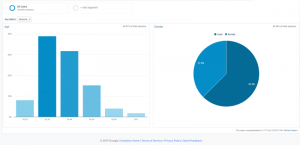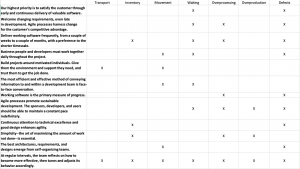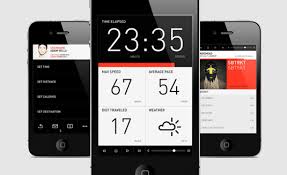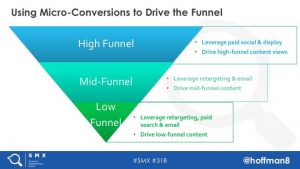Craft engaging email campaigns that stand out. Learn key strategies for subject lines, personalization, visuals and timing for success.

Imagine it’s Monday morning and your inbox is overflowing. Amid the sea of emails, one catches your eye — a message from your favorite sports store about the perfect running shoes for the marathon you’re gearing up for. The subject line hooks you instantly and a click later, you’re looking at content crafted just for you, complete with training tips and a tempting discount.
What made this email stand out? Let’s dive into the key elements that make email campaigns effective, including how to:
- Create irresistible subject lines.
- Personalize content to resonate deeply.
- Enhance messages with compelling visuals.
- Time your emails for maximum impact.
Build your email from the ground up
Every high-performing email starts with a strong foundation. This foundation includes several core components: the subject line, preheader, header and footer. Each part plays a crucial role in attracting and retaining the reader’s attention:
- Subject line: This is the first touchpoint and must make an immediate impact to encourage the recipient to open the email.
- Preheader: Often overlooked, the preheader text complements the subject line by offering a sneak peek into the email content.
- Header: The header often contains your logo or brand name, establishing brand identity right at the outset.
- Footer: This section typically includes contact information, legal disclaimers and unsubscribe links, ensuring compliance and offering one last engagement opportunity.
A well-structured email looks more professional and enhances user engagement by making the content easy to navigate and read. Ensuring these elements are thoughtfully crafted and aligned with your brand’s voice sets the stage for the rest of your email content.
How can you ensure your email content converts?
Creating content that resonates and drives action is central to any email campaign’s success. Here’s how you can ensure your email content converts:
Craft subject lines that captivate
Your subject line is the first impression — make it powerful:
- Be specific: For instance, a sports equipment retailer might use “Slash 20% Off Triathlon Gear This Weekend Only!”
- Personalize: Try “John, Gear Up with Our Exclusive Triathlon Training Kits!”
- Keep it short: Limit to 50 characters to prevent cutoffs in most email clients.
- Test variations: Employ A/B testing to find what works best. A sports store could compare a direct offer like “Get 30% Off Now!” against a curiosity-driven one such as “Discover What’s New in Triathlon Wear!”
Write engaging body content
Make the body of your email irresistible:
- Structure your content: Use headings for each section, bullet points to highlight benefits and short paragraphs to maintain focus.
- Direct address: Use direct phrases like “You can conquer your next race” to personalize the message.
- Provide clear solutions: Explain how your products help solve specific problems, such as “Our latest running shoes feature enhanced cushioning to minimize race-day fatigue.”
Enhance with visuals and design
Elevating your message’s impact requires careful attention to the visuals you choose. Here’s how to select and design images that captivate and communicate effectively:
Choose relevant images
- Select images that directly relate to your message: For a sports equipment campaign, use high-quality photos of athletes using your products in real scenarios, such as a runner in a marathon wearing your latest gear. This demonstrates your product in action and inspires your audience.
Create engaging infographics
- Infographics are excellent for breaking down complex data or instructions into easily digestible, engaging content.
- Design infographics that simplify your training programs, nutrition plans or gear benefits. Use clear, readable fonts and colors that stand out while remaining on-brand.
Optimize visuals for all devices
- Responsive design: Ensure your images are responsive, meaning they automatically adjust to fit the screen size on which they are viewed, from desktops to smartphones. This prevents images from appearing too large or too small.
- Image quality and size: Use high-resolution images that are compressed for web use. This maintains visual clarity while ensuring the images load quickly on all devices, which is crucial for keeping your audience engaged and not bouncing off due to slow loading times.
Maintain brand consistency
- Color scheme: Use colors that align with your brand palette across all your visuals. This reinforces brand identity and improves recognition.
- Logo placement: Integrate your logo subtly but visibly in images and infographics. This can be as a watermark or placed in a corner that does not distract from the content but ensures your brand is noticeable.
Alignment and composition
- Alignment: Align images to guide the reader through the content. For example, placing an image to the right of text that describes a product can help maintain a clean and organized layout that naturally draws the reader’s eyes across the page.
- Composition: Choose or create images with a clear focus point that communicates your message. Avoid cluttered backgrounds that can distract from the main subject of the image.
How can you make each email feel like a one-on-one conversation?
Effective personalization and segmentation transform your email marketing into a personal dialogue with each subscriber.
Understand your audience
- Gather data: Use sign-up forms and purchase histories. Employ CRM tools to streamline and manage this information.
- Create meaningful segments: For a sporting goods store, this might involve segmenting customers who purchase high-end running gear from those looking for basic equipment.
- Customize communications: Tailor emails to meet the specific interests of each segment. For avid gear buyers, highlight cutting-edge technology or offer sneak peeks of new arrivals.
When to hit send
Timing your emails correctly can significantly enhance their effectiveness.
Refine your email scheduling
- Analyze past performance: Use analytics tools to determine when your emails have the highest open and click rates.
- Segment by time zone: Ensure emails arrive at an optimal time for each recipient, especially if your audience is global.
- Continuous testing: Regularly experiment with different sending times and days. While midweek mornings might generally perform well, your specific audience could have different preferences.
- Refine frequency: Begin with a base frequency, such as weekly and adjust based on subscriber feedback and engagement metrics.
Example: A fitness apparel brand uses A/B testing to determine the optimal time to send their emails. They discovered that emails sent on Tuesday mornings receive an 18% higher engagement rate than those sent on weekends. Based on this insight, the brand shifted its primary email schedule to Tuesday mornings, significantly improving open rates and conversions.
Make your CTAs impossible to ignore
A well-crafted call to action (CTA) transforms your email from informative to actionable. Here’s how you can design CTAs that command attention and drive engagement, particularly for a sporting goods store:
Clarity is key
Use direct, imperative language that clearly states what you want the subscriber to do. For instance, a sporting goods store might use CTAs like “Score Your Free Training Guide,” “Join Our Fitness Community Now!” or “Gear Up Today.”
Design with purpose
Create your CTA buttons with bold colors that stand out against the email’s design. Ensure they are large enough for easy clicking, especially on mobile devices. A sports store might use vibrant, energetic colors like bright blues or greens to invoke a sense of activity and energy.
Strategic placement
Place your CTA prominently, ideally above the fold, for immediate visibility. For longer emails, include another CTA at the end to capture those who have engaged with the entire message.
How can you ensure your email marketing continuously improves?
Master the art of A/B testing
A/B testing is crucial for refining your email strategies. Here’s how to leverage it effectively, illustrated with a sporting goods store example:
- Focus on one variable: Test one aspect at a time — whether it’s the subject line, content layout or a CTA. For instance, compare “Get 30% Off on Running Shoes” versus “Limited Time: 30% Off for Marathon Runners” to determine which resonates more with your audience.
- Use the right tools: Employ the A/B testing capabilities of your email marketing platform to directly compare the performance of different versions.
Example: A sporting goods retailer tested two subject lines over a month: “Unlock Exclusive Running Tips!” vs. “Exclusive Running Tips Just for You!” The personalized approach increased open rates by 15%.
Analyze and adjust based on data
Continuous improvement in email marketing hinges on the effective use of data:
- Monitor key metrics: Keep track of metrics such as open rates, click-through rates and conversion rates. Tools like Google Analytics can help provide deeper insights into how your emails are performing.
- Make data-driven decisions: If engagement drops, consider adjusting the timing of your emails, the content provided or how you segment your audience, based on what the data suggests.
The tools of the trade
Modern email marketing combines creativity with advanced technology. Here’s how the right tools can boost your campaigns:
- Choose the right platform: Select email marketing tools like Constant Contact or Mail Mint that offer comprehensive features suited to your needs — such as A/B testing, automated campaigns, detailed analytics and customizable templates.
- Set up automated emails: Automate your email processes to enhance efficiency. Set triggers for specific subscriber actions, like sending a welcome email after signup or a special offer following a customer’s first purchase.
- Benefits of automation: Automated emails ensure consistent communication with your customers and help maintain engagement without requiring daily management from your team.
Maximize your email marketing impact
To sum it up, effective email campaigns are crafted with thoughtful design, precise timing and content that truly connects with your audience. When you personalize messages and segment your audience, you make each email more relevant and engaging. Clear calls to action push these tailored messages towards successful conversions.
Here’s how you can take immediate action to enhance your email marketing:
- Audit your emails: Quickly review your recent campaigns. Identify what’s working and pinpoint areas for improvement.
- Test and learn: Employ A/B testing on elements like subject lines or CTA wording to discover what captures your audience’s attention.
- Deepen personalization: Use insights from customer data to refine your audience segments. Tailored emails are more likely to engage and convert.
- Ensure mobile compatibility: Make sure your emails look great on any device, considering many users read emails on their phones.
- Optimize send times: Analyze the performance data to choose the best times to send your emails for maximum open rates.
Take the first step today — refine your email approach and watch your engagement and conversions grow.
The post How to create high-performing email campaigns appeared first on MarTech.
(9)
Report Post






